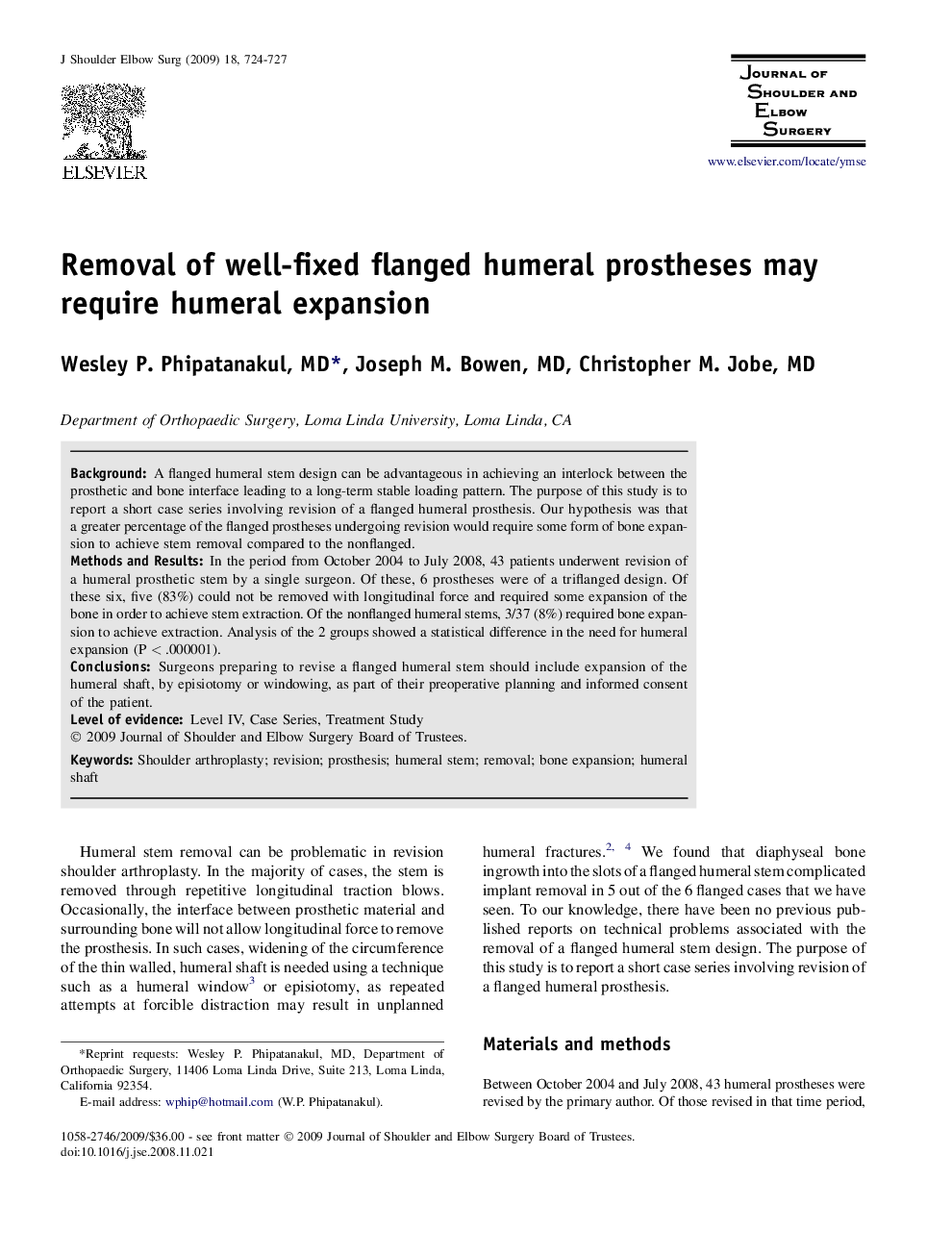| Article ID | Journal | Published Year | Pages | File Type |
|---|---|---|---|---|
| 4075165 | Journal of Shoulder and Elbow Surgery | 2009 | 4 Pages |
BackgroundA flanged humeral stem design can be advantageous in achieving an interlock between the prosthetic and bone interface leading to a long-term stable loading pattern. The purpose of this study is to report a short case series involving revision of a flanged humeral prosthesis. Our hypothesis was that a greater percentage of the flanged prostheses undergoing revision would require some form of bone expansion to achieve stem removal compared to the nonflanged.Methods and ResultsIn the period from October 2004 to July 2008, 43 patients underwent revision of a humeral prosthetic stem by a single surgeon. Of these, 6 prostheses were of a triflanged design. Of these six, five (83%) could not be removed with longitudinal force and required some expansion of the bone in order to achieve stem extraction. Of the nonflanged humeral stems, 3/37 (8%) required bone expansion to achieve extraction. Analysis of the 2 groups showed a statistical difference in the need for humeral expansion (P < .000001).ConclusionsSurgeons preparing to revise a flanged humeral stem should include expansion of the humeral shaft, by episiotomy or windowing, as part of their preoperative planning and informed consent of the patient.Level of evidenceLevel IV, Case Series, Treatment Study.
